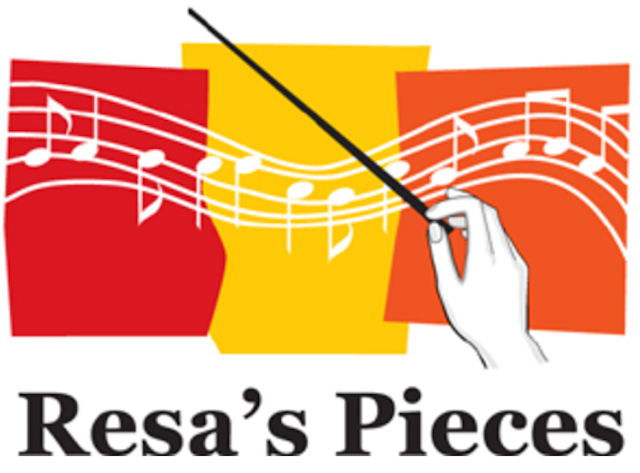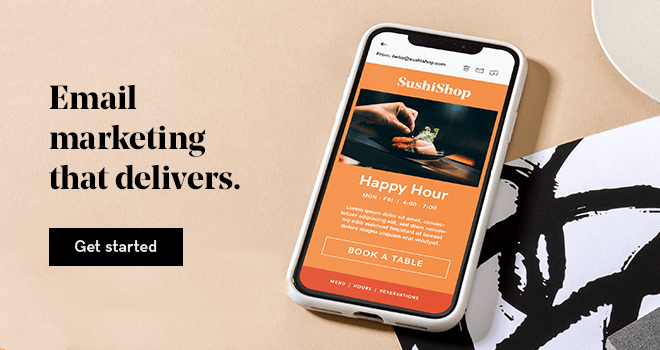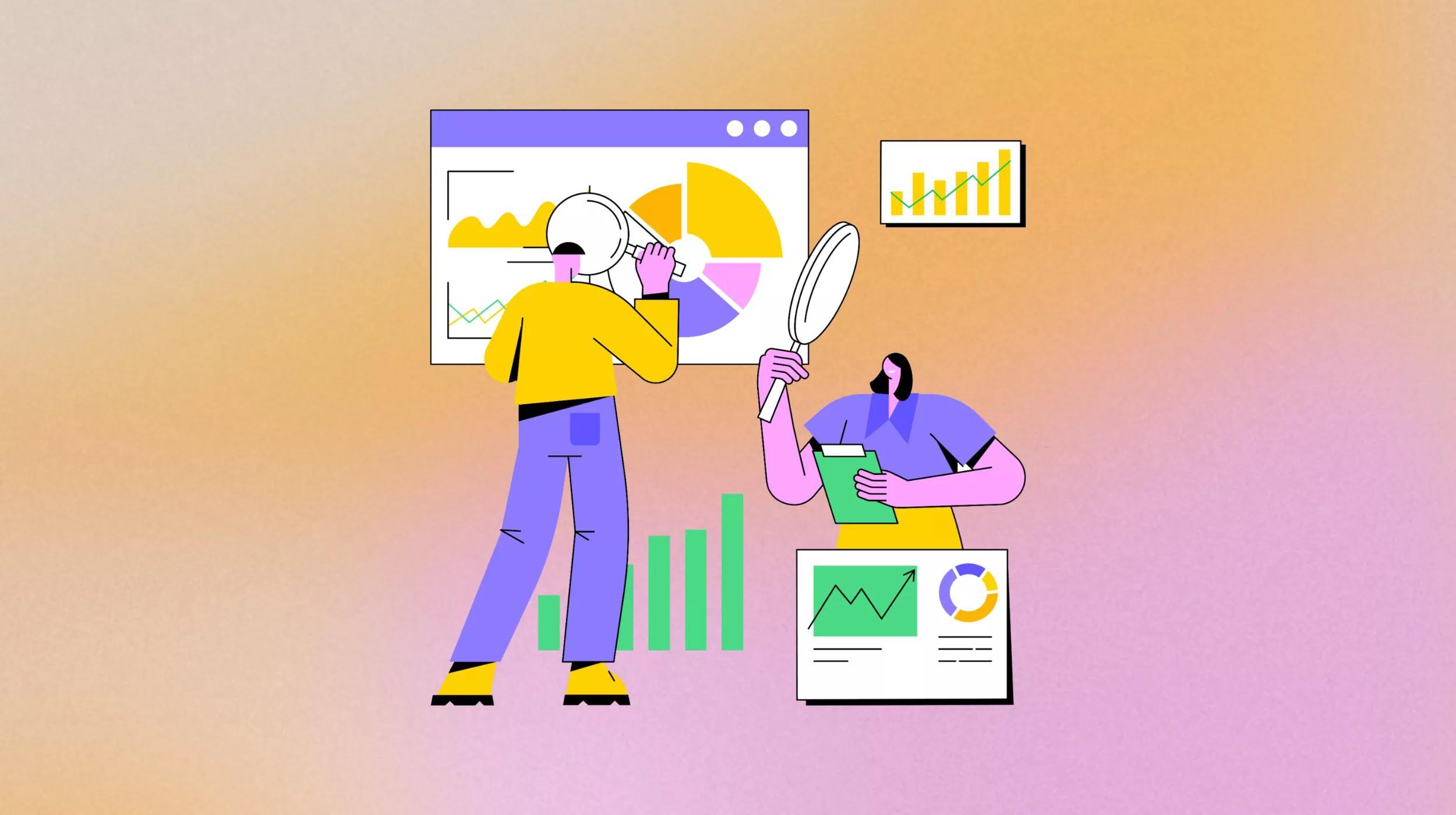As an artist, it can be challenging to figure out what to write about in your email newsletter. Email marketing for artists should not be scary.
It’s easy to fall into the trap of simply listing what you’re up to (upcoming shows, new work, etc.). Or throwing a discount code into every email, hoping it’ll help you make some cash.
But in this day and age of saturated inboxes, we need to give the people on our lists a good reason to open our emails. Email marketing for artists should be a little strategic!
Here are 5 simple tips to make your emails interesting and engaging:
1. Figure out why people connect to your artwork. Then write about that in your email newsletter.
Do you paint custom pet portraits? Your customers are obviously animal lovers. Why not share heart-warming stories about pets and their owners in your emails? Ask your readers to send in their stories to be featured in your newsletter!
Promote your business with a killer email newsletter. Try GoDaddy Email Marketing today.
Do you make handmade books? Your customers probably love to write and have kept journals/diaries since they were children. Maybe you can write about your favorite memories of keeping a diary as a child. Where did you hide it? What did you write in it? What were your deep, dark secrets that probably seem so funny now? Help people connect with that childhood love of writing!
Get to the heart of what it is in your heart that people are connecting to, and then help them feel that connection. You’ll develop a wonderful and responsive email list this way!
2. Show behind-the-scenes images and works in progress
In my experience, people love peeking into an artist’s process. Take some photos as you’re painting or drawing or creating on your computer and share them in your email newsletter. Show people a sliver of what it’s like to live your creative life! This also helps to pique people’s interest and is an easy way to get them primed for the new artwork you have coming. Sneaky, right?
3. Send emails about sales sparingly
While sending out discount codes and I’m-having-a-sale emails may seem like a good idea — everybody loves a good sale, right? — if you do it too often, it can diminish the effectiveness and the value of your work. If you put your items on sale, it should seem like a special event, one that doesn’t come around very often. A good rule of thumb is to have just a few sales a year.
For every sales- or new-product-related email you send out, send at least four or five other emails. Your relationship with your readers will develop in your non-sales-related emails, and once you’ve built that relationship, they’ll be much more likely to read your sales emails, too (and probably more likely to buy!).
4. Start a secret, exclusive list for dedicated purchasers
Treat this list like a VIP list — send out sales emails about new products to this list before your regular newsletter list, and give them special deals and pricing because they're on the list. Make them feel special!
(Contrary to point #3 above, this list can be used solely for sales-type emails. Be clear in your sign-up language that the list is for people who are interested in being notified about sales and special deals on new products!)
5. Share your inspiration
Your readers like your artwork because it inspires them. But what inspires YOU? Let them know! This is a great way to connect with your readers and help them feel closer to you.
- Share photos that you take around town, in your home, or in your garden.
- Share links to great articles you read or websites and blogs that you love.
- Share images of the objects that inspire your paintings or drawings or patterns.
- Share the artwork you have hanging in your own home.
What’s your life really like behind your artwork and your online presence? Give them a peek into YOU.
What success are artists having with email marketing?
We caught up with the leadership of Toronto-based Resa's Pieces to discuss their success using email marketing for artists. Resa's Pieces is a nonprofit arts organization with a mission to meet the growing demand for adults to "reawaken that talent and rediscover making music." Members of the concert band, strings ensemble and choral ensemble learn and perform music and then share their love of music with the community.
What are your main goals for your email efforts?
"Our main goal is to share information with our membership and then with our patrons and audience. We use emails to keep our fans informed of important updates and make sure they are "in the know," especially when it comes to announcing our main events. As well, we've used emails to promote annual holiday concerts and to make sure that we'll have an audience to play to!"
How often do you send your emails?
"We like to be conservative in sending out emails so we don't "bother" folks. We aim to provide people with only the most important info, as we're respectful of their time and of how many emails people receive daily. We tend to schedule monthly emails from March to June. We also send an additional three to five emails during the balance of the year. While this doesn't add up to a lot ... it certainly does the trick for us!"
Who is involved in the actual content creation?
"Our webmaster assists in creating a Resa's Pieces theme and then our "in-house" team takes it from there."
Is there a particular process to get from coming up with the ideas to hitting send?
"We come up with the text and images and decide on catchy phrases to draw people in right away. We aim to set out the information in the most concise way — crisp and clean — adding links where needed. Then we test away by sending the email to a select few for comment. Revisions are made, and after we have a finished product, we schedule the final version to go out. We like the emails to be as short as possible and to the point.
We've also learned not to provide too many "click spots" in the email. That is, we make sure that if the audience is going to click, it's for the call to action! We try to limit where the links go to keep people on the content of the email vs. clicking away.
We aim to give our audience an interesting subject line, hoping that readers will be curious to open the email, view it, and then engage if/where available to do so."
How do you approach segmentation?
"We have various audiences, having worked extremely hard on building our database. We keep separate lists so it's easier to schedule which email goes to whom! We are constantly adding to our audience lists. It's a work in progress."
What has been the #1 benefit of using email to communicate with your audience?
"Communication is the benefit! Setting up all the info and then knowing that the email is sent to ALL, at one time, proves to be effective. It's easy to plan ahead, scheduling emails in advance of target dates. And tracking and following stats has been exciting for us! We seem to be successfully reaching our fan base. This success translates into full audiences and a rewarding experience for our members (i.e., playing to full houses, happy crowds with smiling faces, and sharing our love of music with the community.)"
What's your top piece of advice for email marketing for artists?
"Building a database is key! You can't do much without it. We suggest thinking of ways to collect people's emails. (And in Canada, make sure to check out the new anti-spam laws that came into effect July 1, 2014). Develop a plan, put together a team, and lastly — be creative and have fun!"
Email marketing takeaways for other arts organizations
- Put together a good in-house team to create your email content and plan the best timing for your mailings.
- Build your database by finding creative ways to get people to opt into your list.
- Segment your list into groups (i.e., donors, volunteers) so you can send relevant content to the right people.
- Send valuable content at a pace that's appropriate to your audience. Provide value without burdening your contacts' inboxes.
- Limit the number of links in your emails to encourage people to click on your primary call to action.
- Take the time to come up with compelling email subject lines.
- Test your email content on some willing editors before sending it to your entire list.
- Use email analytics to track your success and keep making improvements.
- Be creative and have fun — you're in the arts!
Thanks so much to the team at Resa's Pieces for sharing this valuable information! Thanks also to Alex Sirota at NewPath Consulting for sharing the case study.







